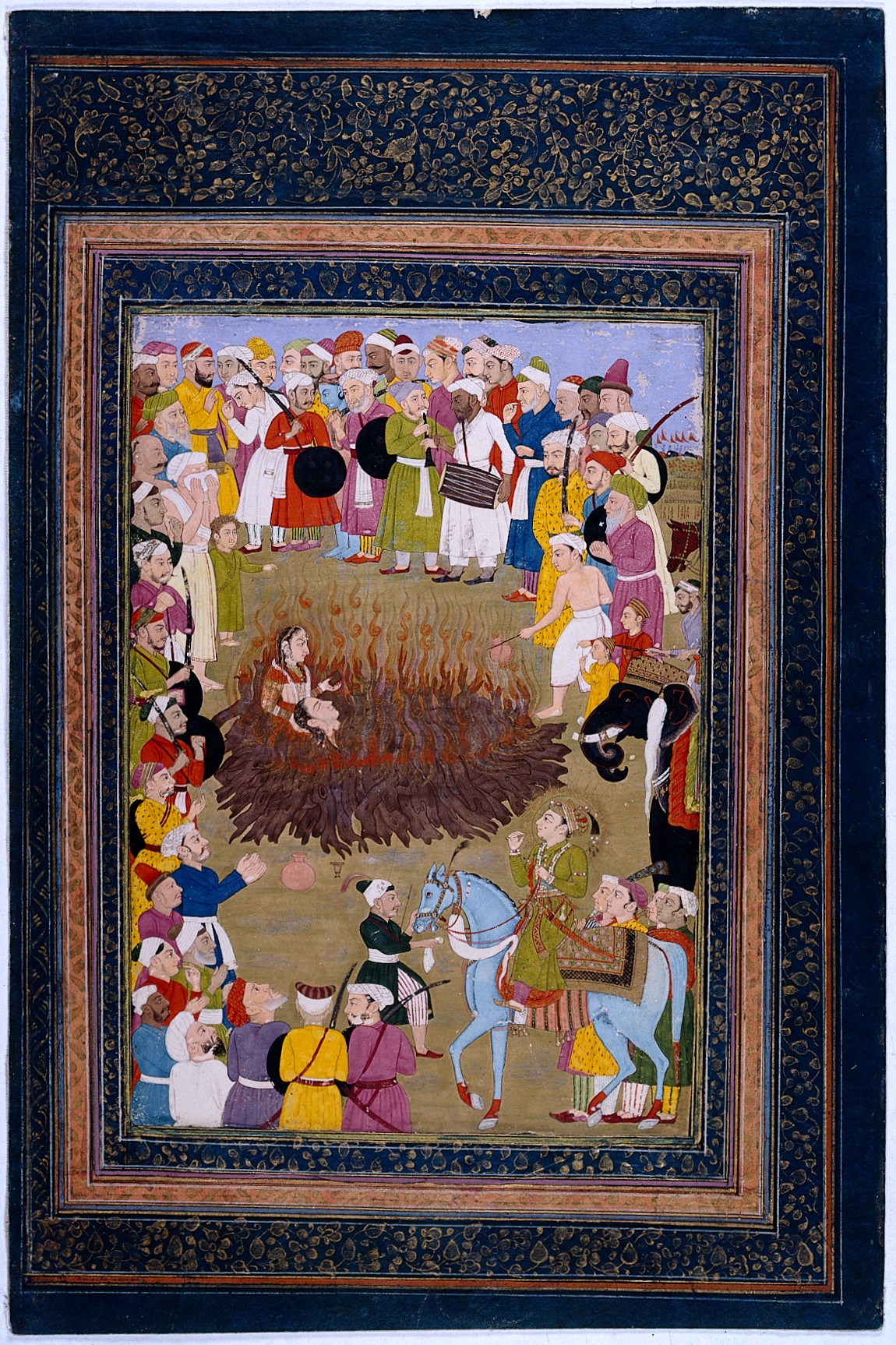A Hindu Princess Committing Sati against the Wishes of Emperor Akbar

Annotation
This 18th century painting by Mohammad Rizā Naw'ī depicts Sati, the practice whereby an elite Hindu widow would commit suicide through self-immolation upon the death of her husband. Sati was featured prominently in European depictions of Hinduism where it reinforced “exotic” stereotypes of South Asians, and was used as an excuse to justify British Imperialism. In reality, the practice was not common or very widespread. Sati was also opposed by many South Asians at the time. In this painting, Prince Dāniyāl, the man on horseback in the lower right corner of the painting was the eldest son of the ruler of the Mughal empire, Emperor Akbar. The Muslim Mughal elites disapproved of the practice of Sati and part of the story in this painting relates how Emperor Akbar disagreed with the practice and only reluctantly granted permission for this Sati to take place.
This source is a part of the Sati teaching module.
Credits
Courtesy of the Wellcome Collection, London